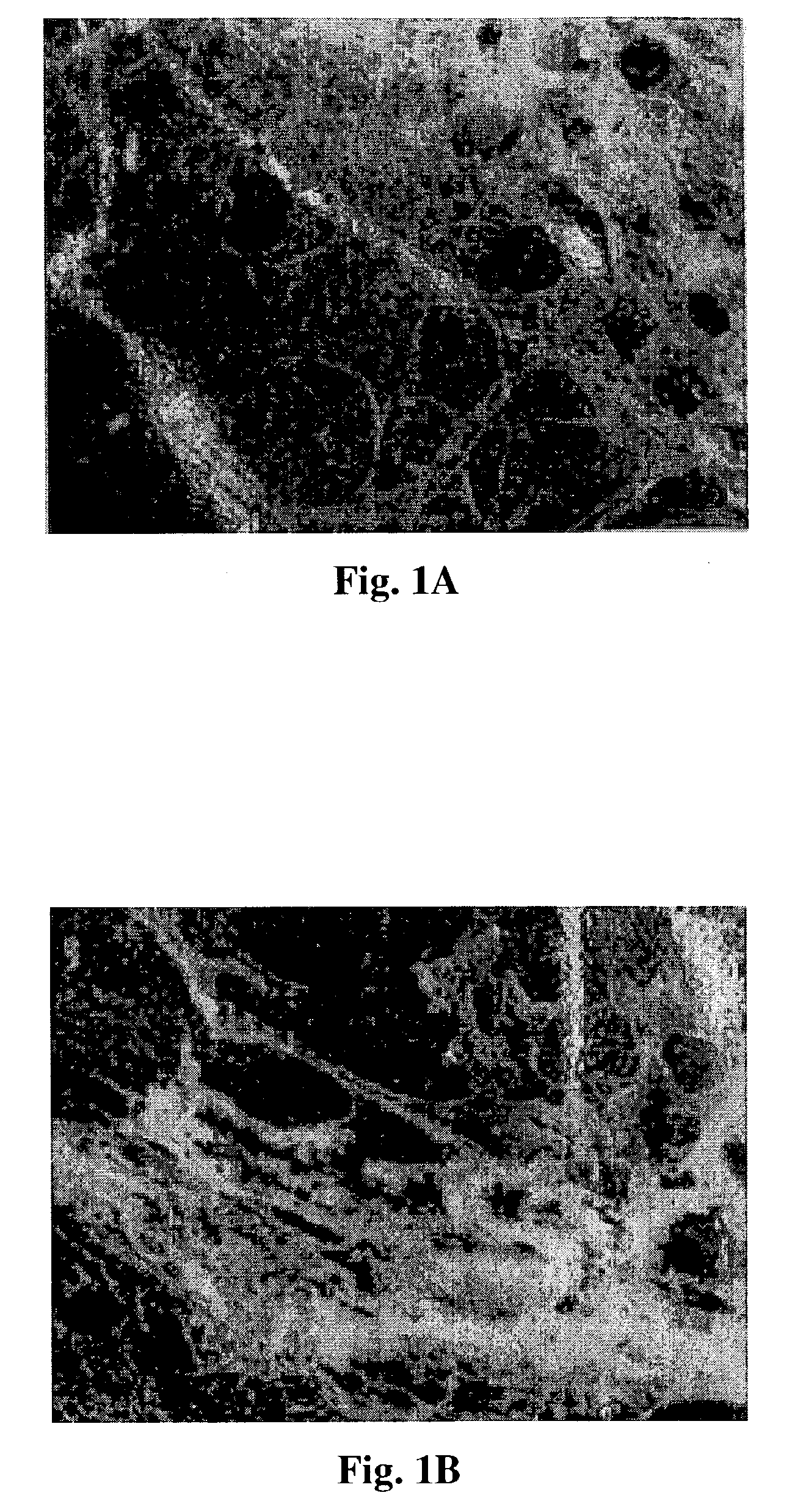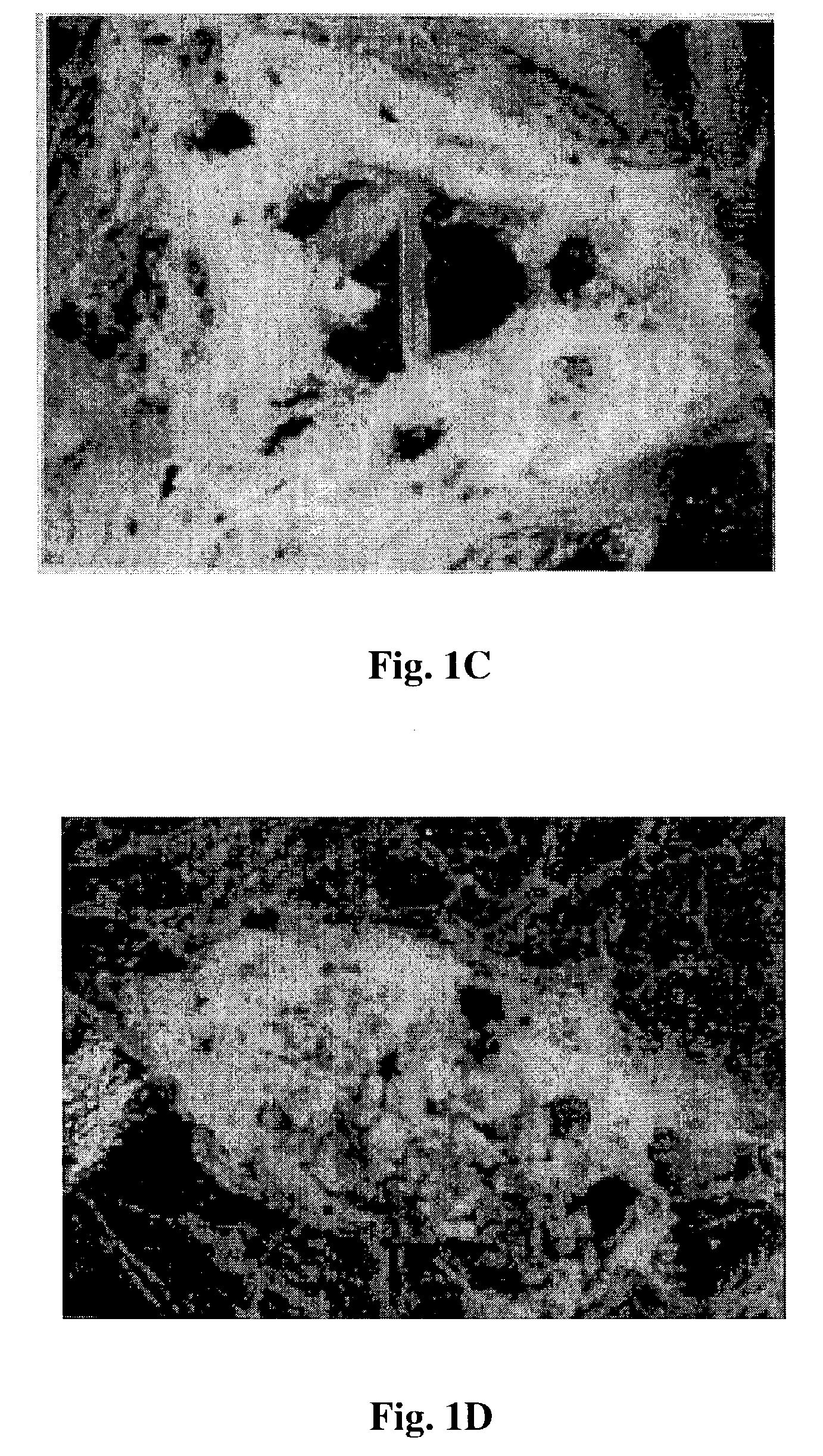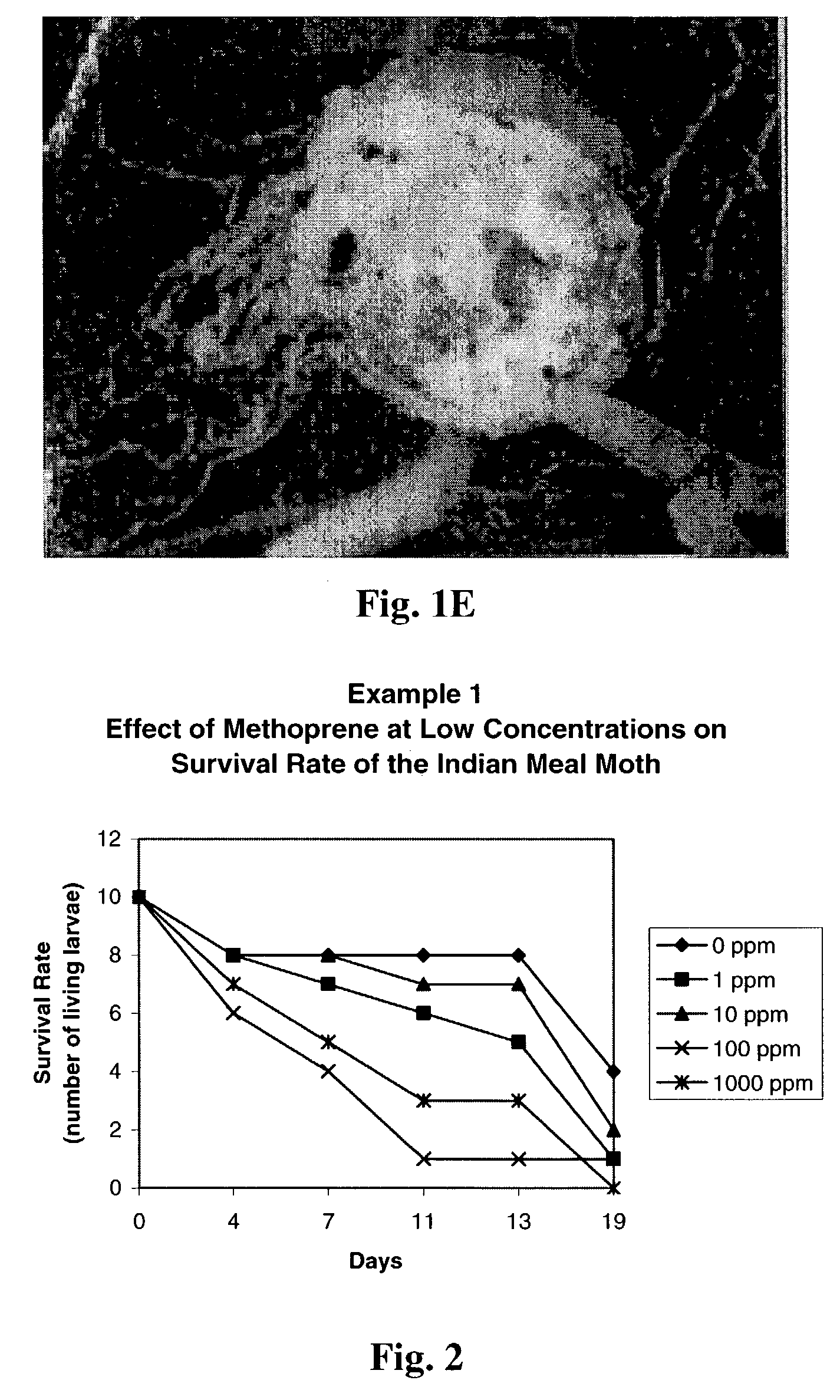Juvenile hormone compositions and methods for making same
a hormone composition and juvenile technology, applied in the field of preventing pest infestation, can solve the problems of difficult control of unsuitable for food packaging materials, and difficult to control the wandering-phase indian meal moth larvae, etc., to achieve increased nipping and cannibalism, the effect of reducing the number of pests
- Summary
- Abstract
- Description
- Claims
- Application Information
AI Technical Summary
Benefits of technology
Problems solved by technology
Method used
Image
Examples
example 1
Effect of Methoprene at Low Concentrations
Procedure
[0051]An experiment was set up to determine the effectiveness of methoprene at very low concentrations on day 16 larvae of the Indian Meal Moth, Plodia Interpunctella. The concentrations tested ranged from the control at 0 wppm to 1000 wppm increasing by increments of 10×. Ten larvae per sample were added to the treated paper and exposed throughout the experiment in an incubator (Precision Model No. 815) at 80° F. (27° C.) and at a relative humidity of 60 percent. Behavior, webbing characteristics and survival rates were observed over 19 days.
[0052]The coating formulation components (excluding methoprene) and preparation procedure are described in Table 1, below.
[0053]
TABLE 1COATING PREPARATION PROCEDUREAND PERCENT COMPOSITIONActualWeightBatch StepPercentageTheoretical Weight1. Weigh out photomer 4006 (Cognis)47.1747.2 lbs. (21.4 kg) trimethylolpropane triacrylate monomer2. Add CAB 551-0.01 premix (Actinic)25.0025.0 lbs. (11.3 kg) R...
example 2
Combining Diatomaceous Earth with Methoprene
Procedure
[0059]An experiment was set up to determine the effect of combining diatomaceous earth (DE) with methoprene (MP) in a UV coating layer. Eggs were allowed to hatch and the newly emerged larvae were forced to crawl across a treated sample to reach the food source. The treatment samples included a control (Mw-720), 1 weight percent diatomaceous earth, and 1 weight percent diatomaceous earth combined with methoprene concentrations ranging from 1 wppm to 1000 wppm in increments of 10×. The compositions of the coating layers in this experiment were the same as in Example 1, but also containing diatomaceous earth, as indicated in Table 3, below. Five eggs per dish and three dishes per sample were tested. This experiment focused on the maturation and the offspring produced. Results were obtained over a 31 or 32 day period. A total of fifteen eggs were exposed to each treatment level. From when adults hatched, the number of adults were cou...
example 3
Exposure of 16 Day Larvae to Methoprene
[0063]An experiment was set up to determine the effect of exposing 16 day Indian Meal Moth larvae to methoprene for varying periods of time. The treatment levels tested were control at 0 wppm methoprene and 1000 wppm methoprene. Five larvae (3 females, 2 males) per sample were added to paper treated with the coating composition described in Example 1. The larvae were exposed to the samples for different amount of time. The times of exposure were 0 hrs., 20 min., 1 hr., 2 hrs., 4 hrs., 8 hrs., and 24 hrs. After larvae were exposed for the set amount of time, they were placed in an incubator (Precision Model No. 815) at 80° F. (27° C.) and at a relative humidity of 60 percent, where they were allowed to pupate, become adults, and reproduce. Observations were obtained throughout a 16 day period. Table 4, below, represents data collected over the test period. From when adults hatched, the number of adults were counted and averaged over the remainde...
PUM
| Property | Measurement | Unit |
|---|---|---|
| weight percent | aaaaa | aaaaa |
| weight percent | aaaaa | aaaaa |
| weight percent | aaaaa | aaaaa |
Abstract
Description
Claims
Application Information
 Login to View More
Login to View More - R&D
- Intellectual Property
- Life Sciences
- Materials
- Tech Scout
- Unparalleled Data Quality
- Higher Quality Content
- 60% Fewer Hallucinations
Browse by: Latest US Patents, China's latest patents, Technical Efficacy Thesaurus, Application Domain, Technology Topic, Popular Technical Reports.
© 2025 PatSnap. All rights reserved.Legal|Privacy policy|Modern Slavery Act Transparency Statement|Sitemap|About US| Contact US: help@patsnap.com



